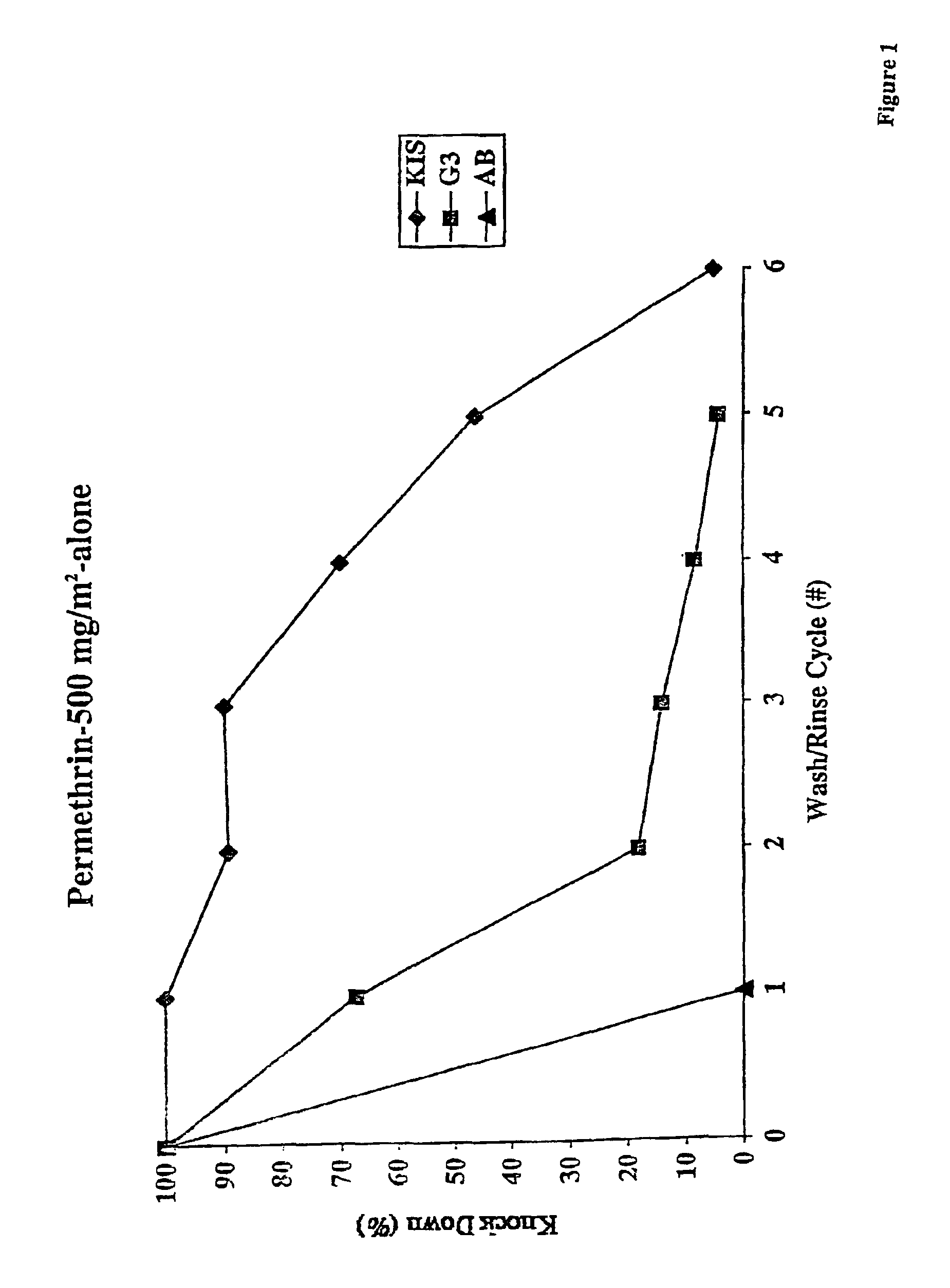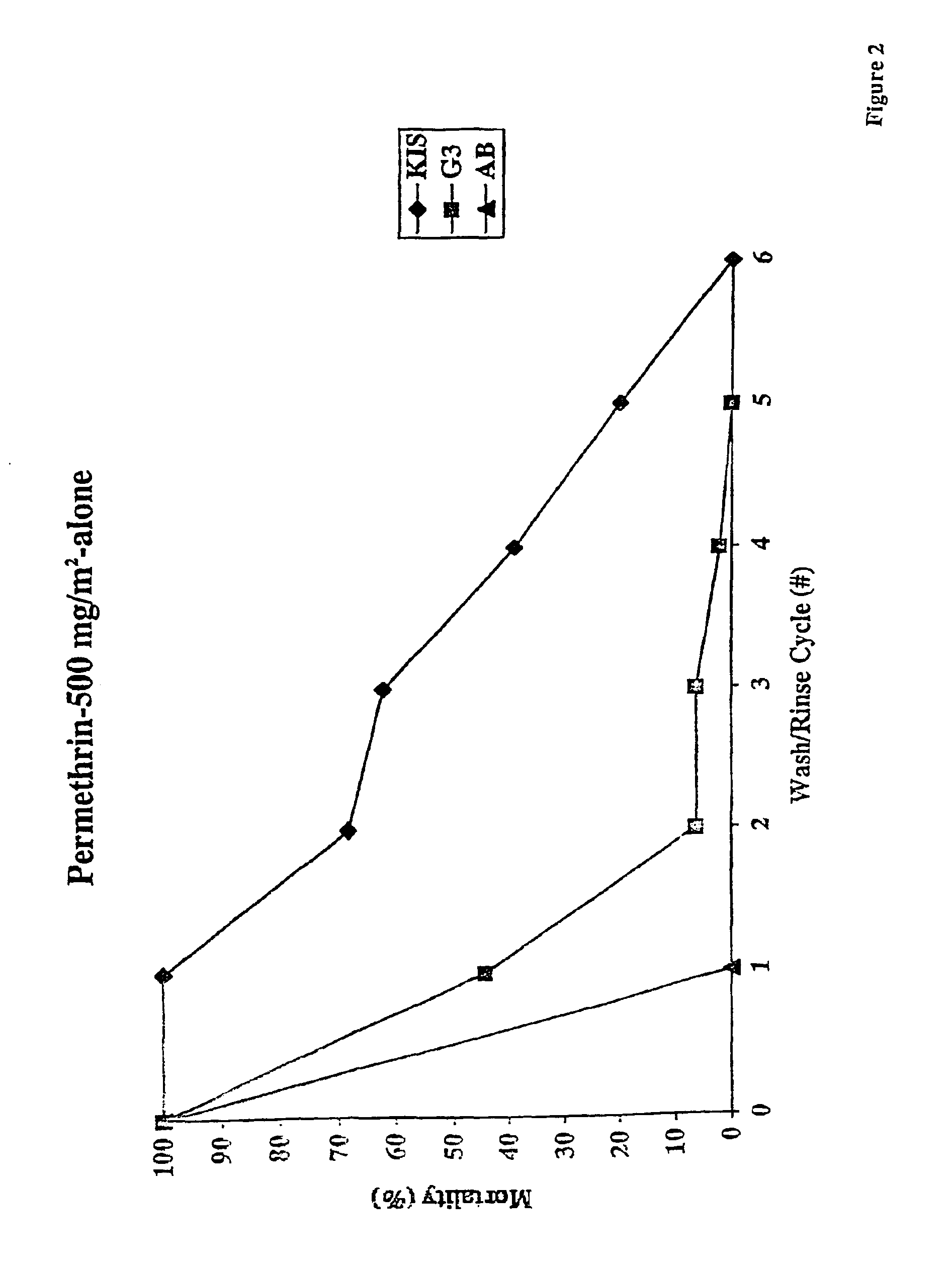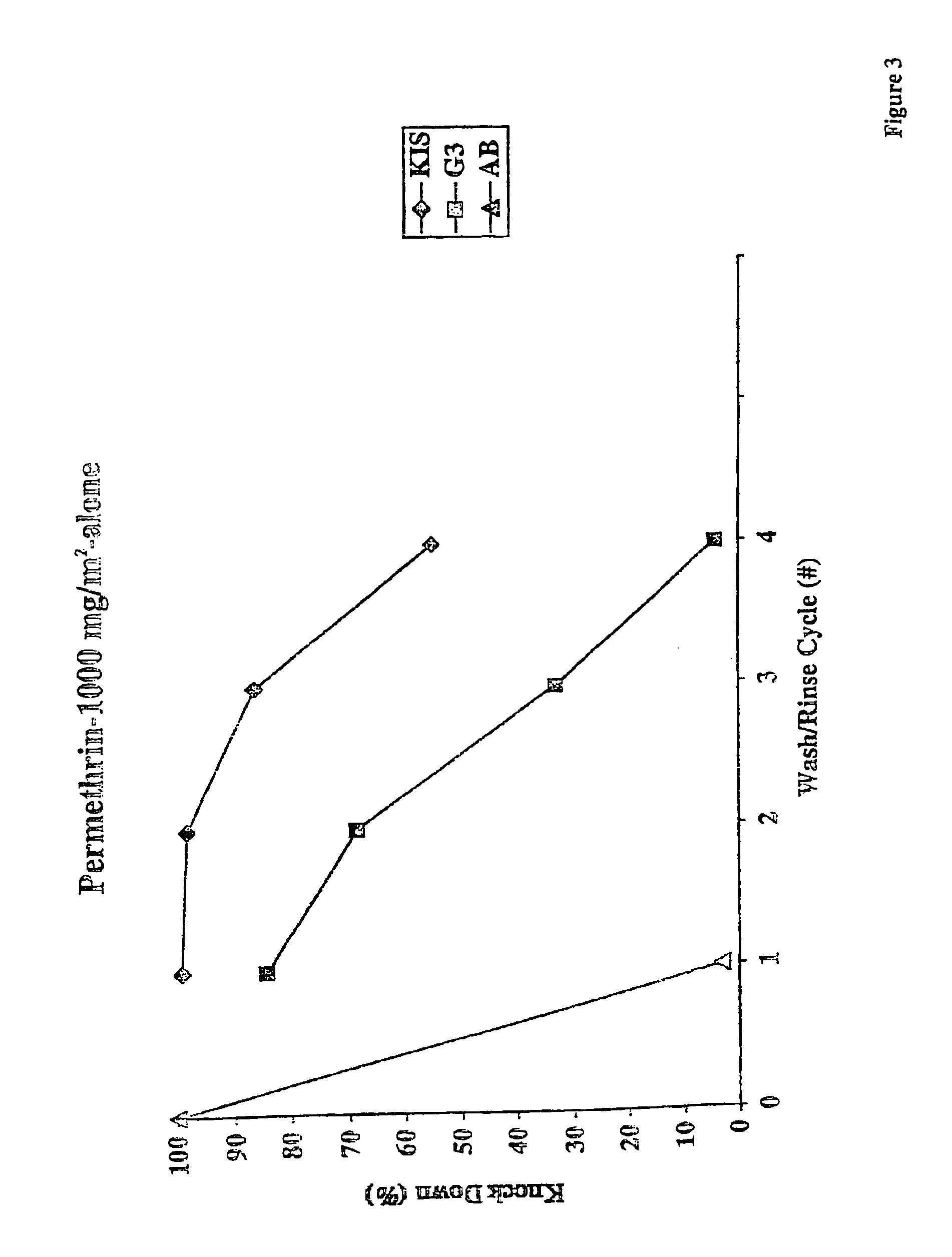Insecticide-impregnated fabric and method of production
- Summary
- Abstract
- Description
- Claims
- Application Information
AI Technical Summary
Benefits of technology
Problems solved by technology
Method used
Image
Examples
example 1
Preparation of Insecticide Impregnated Bednet Samples
[0049]Insecticide-impregnated bednet samples were prepared as follows. A 3.2 ml volume of de-ionized water and a calculated volume of a particular insecticide formulation, to achieve a desired target impregnation level for the insecticide, was added to a 30 ml beaker. Four 12.5×15.5 cm pieces of polypropylene or polyester netting were evenly stacked on top of each other, then folded several times. The stack of folded netting pieces was then placed into the beaker containing the prepared impregnation solution, and the stack was kneaded about in the beaker for several minutes. A piece of aluminum foil was placed over the beaker to prevent evaporation, and the beaker was placed upside down for at least 1 hour to facilitate further equilibration. The stack was then removed from the beaker, unfolded, and individual netting samples lain flat, in order from top to bottom, on a piece of aluminum foil for drying. After drying was complete,...
example 2
Bednets Treated With Permethrin, Cyclodextrin and PVA
[0059]Wash-durable impregnated bednet samples are prepared as follows. A permethrin net impregnation solution or emulsion or suspension is prepared by adding permethrin, PVA, and cyclodextrin to a quantity of water calculated to result in a predetermined permethrin concentration for a single dipping cycle. Usually, a weighed quantity of hydroxypropyl β-cyclodextrin (or other appreciably water-soluble cyclodextrin) is first dissolved into a volume of water. A specific volume of permethrin emulsifiable concentrate formulation to give the desired impregnation concentration, is slowly added to the aqueous cyclodextrin solution with stirring. After further stirring for 1-2 hours to allow inclusion of the insecticide into the cyclodextrin, a commercial PVA emulsion is added with stirring, usually at the rate of 1 drop per ml of resulting impregnation / treatment solution. A 12.5×15.5 cm piece of 100 denier, polyester or polypropylene nett...
example 3
Comparison of Various Concentrations of Cyclodextrin
[0065]Polyester bednet samples were prepared similarly as indicated in Example 2. Treatment solutions / emulsions were prepared to result in target concentrations of 1000 mg / m2 of permethrin, 1000 mg / m2 of PVA, and varying target concentrations of concentrations of cyclodextrin of 1000, 2000, and 4000 mg / 2, respectively, following a single dipping. Samples of netting were dipped three times into each treatment solution / emulsion, where each sample was allowed to dry overnight before being re-dipped. Thus, the resulting theoretical target concentrations (assuming no material loss of material deposited in previous dipping during the re-dipping) were 3000 mg / m2 for permethrin and PVA and 3000, 6000, and 12,000 mg / m2, respectively, for cyclodextrin. The net samples were tested as indicated in Example 1, above.
Results
[0066]As seen in FIGS. 11-14, increasing concentrations of cyclodextrin increased the effectiveness of the formulation with ...
PUM
| Property | Measurement | Unit |
|---|---|---|
| Fraction | aaaaa | aaaaa |
| Fraction | aaaaa | aaaaa |
| Fraction | aaaaa | aaaaa |
Abstract
Description
Claims
Application Information
 Login to View More
Login to View More - R&D
- Intellectual Property
- Life Sciences
- Materials
- Tech Scout
- Unparalleled Data Quality
- Higher Quality Content
- 60% Fewer Hallucinations
Browse by: Latest US Patents, China's latest patents, Technical Efficacy Thesaurus, Application Domain, Technology Topic, Popular Technical Reports.
© 2025 PatSnap. All rights reserved.Legal|Privacy policy|Modern Slavery Act Transparency Statement|Sitemap|About US| Contact US: help@patsnap.com



